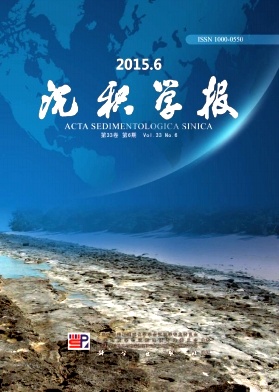Sedimentary Microfacies of the Second Member in Maokou Formation, Middle Permian, South Sichuan Basin
doi: 10.14027/j.cnki.cjxb.2015.06.011
- Received Date: 2014-10-23
- Rev Recd Date: 2015-03-13
- Publish Date: 2015-12-10
-
Key words:
- carbonate platform /
- sedimentary microfacies /
- grain shoals /
- Maokou Formation /
- Mid-Permian /
- southern Sichuan Basin
Abstract: In southern Sichuan Basin, with a number of wells drilled through Maokou Formation, the data obtained is difficult to meet the needs of the study for sedimentary microfacies due to the old materials with poor quality. This paper presents Mao 2A, B, C sub-members all develop a stable bioclastic shoal layer composed of thin stratified-blocky and light gray-gray sparry bioclastic limestones, respectively, which has several typical characteristics:multiple thin shoal bodies with sequences of shallowing and coarsening upwards superimpose frequently in the vertical, the thickness of single shoal body is generally small(less than 3m), the phenomenon of syngenetic exposure is rare through observation and analysis for cores and thin sections of Mao-2 member from only 10 cored wells in southern Sichuan Basin. The Gamma logging character of the multicycle superimposed, thin shoal bodies generally presents the comprehensive response of low value in the high value setting, thus it is difficult to accurately identify and calculate the thickness of grain shoals via logging data. Further analysis found that, during the development of non-exposed shoals inside carbonate platform, the grain shoals develop in microtopographic highs and have a relatively larger deposition rate, thus the depositional microtopographic highs can be approximately portrayed by the thickness variation of isochronal geological bodies that mainly composed of grainstones. Based on analysis of correlation between the thickness of isochronal geological bodies or the depositional microtopography and weathering crust karst reservoirs' development, point out the high-energy bioclastic shoals mainly present along the zonal distibutions of Luzhou-Jiangjin, Zigong-Dazu and Qingshen-Zizhong, which is controlled by the rudiment of Luzhou palaeohigh and Leshan-Longnvsi inherited palaeohigh. The results indicate that the restoration of depositional microtopography has important significance for the study of sedimentary microfacies in highly-developed borehole areas, where the drilling activity has been conducted to a high degree and only low quality of the study material can be used. This may also offer new reference to the prediction of favorable reservoir and the developing potential to the highly development layers.
| Citation: | XIAO Di, TAN XiuCheng, SHAN ShuJiao, PENG Hao, CHEN HongYu, WAN WeiChao, XIONG Ying, LI Shun. Sedimentary Microfacies of the Second Member in Maokou Formation, Middle Permian, South Sichuan Basin[J]. Acta Sedimentologica Sinica, 2015, 33(6): 1182-1191. doi: 10.14027/j.cnki.cjxb.2015.06.011 |






 DownLoad:
DownLoad: